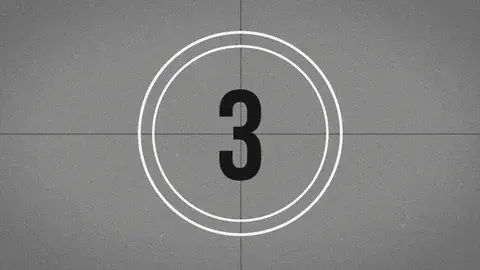You Have Three Seconds: Capturing Attention Fast
- ARC Brand & Creative

- Jun 11
- 3 min read

We’ve all felt it. The endless scroll. Whether it’s Instagram, YouTube Shorts, TikTok, or just flipping through a website, people consume a LOT of content in a short amount of time. On top of that, ads are everywhere we go. There are so many, that people tend to look past them and ignore them. Attention spans today are shorter than ever, and if your content isn’t grabbing someone right away, then you've likely missed your chance.

As much as this applies to video content, it applies across every media format. Whether you’re creating a social ad, designing a print display, building a website banner, or composing product shots, you have a tiny window to get your viewer's attention. If your message doesn’t grab them immediately, they’re already moving on.
The Three Second Rule.

In video, the first few seconds are critical. You typically have about three seconds to hook someone into your concept before they swipe away or lose interest. You need just enough engagement to break through the 3 second barrier, and keep them on your video long enough so you can get to the meat of the content. That’s why you need visually compelling content or a strong message to show up at the very beginning. Think of it as the cover of a book. If it doesn’t spark curiosity, intrigue, or emotion right away, most people won’t even flip it open.
Sometimes this means rethinking your edit. The big moment that used to sit halfway through the video? It might need to move to the front. You can build context later for those who break through the barrier and keep going, but without that initial grab, the rest doesn’t matter.

Eye Flow
Image based advertisements, printed ads, billboards - they are all subject to short attention spans. As with video, people scan with their eyes, and if there isn’t a clear visual path, focal point, or attention grabbing content, they’ll keep scrolling or walking. A good image ad controls the viewer’s eye flow. That might mean placing bold text near a high-contrast area, using "lines" to guide the eye, or keeping layouts clean and intentional.
Think about what you want someone to notice first, then structure your image to support that. People won't stop to study the details unless you earn it. If the most important information is buried or too subtle, it’s easy to miss.

Targeted Content Matters More Than Ever.
This shortening of attention spans has also made targeted advertising more important. If your content is too general or trying to speak to everyone, it will likely fail to land with anyone in particular. The more tailored your message is to the person seeing it, the more likely they are to stop and pay attention.
You need to know who your audience is and create for them specifically. It also means using the right platforms, formats, and tone of voice. A short-form Instagram reel meant for first-time buyers is going to look very different than a long-form testimonial aimed at loyal customers. Both are valid, but both need to be structured with a particular audience in mind.
Why Does This Matter?
Effective creative content doesn’t just look good. It performs. It earns attention. And it has to do it quickly.
Today’s best-performing content is created with the understanding that people make snap decisions. That doesn’t mean your content needs to be shallow or overly simplified. It just means every second and every pixel needs to serve a purpose. You can, and should, still tell deep, meaningful stories. But you need to open the door quickly enough to invite people in.





Comments